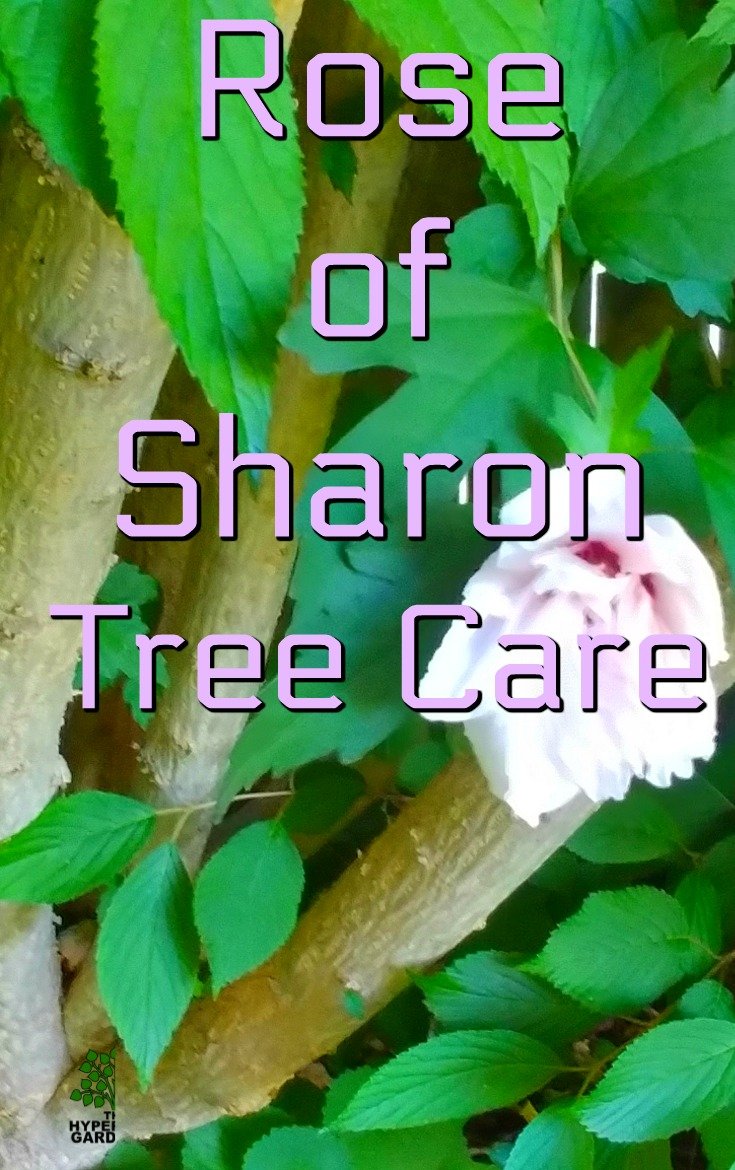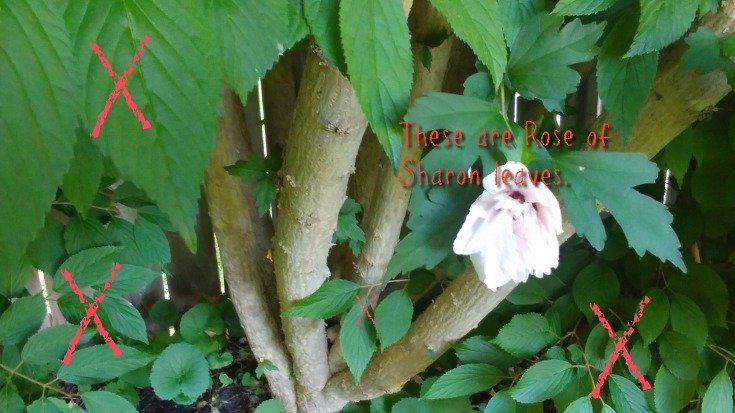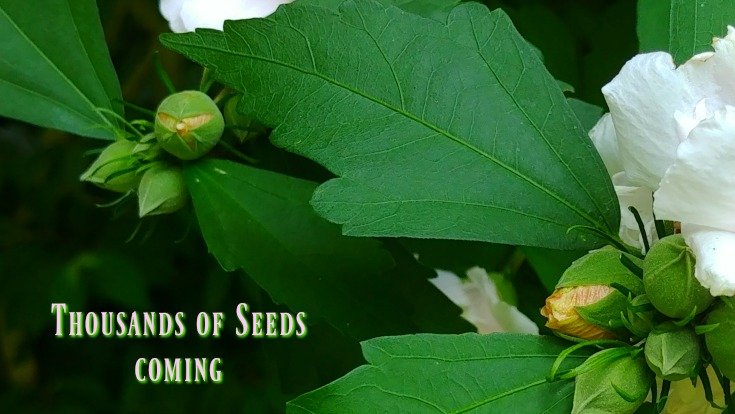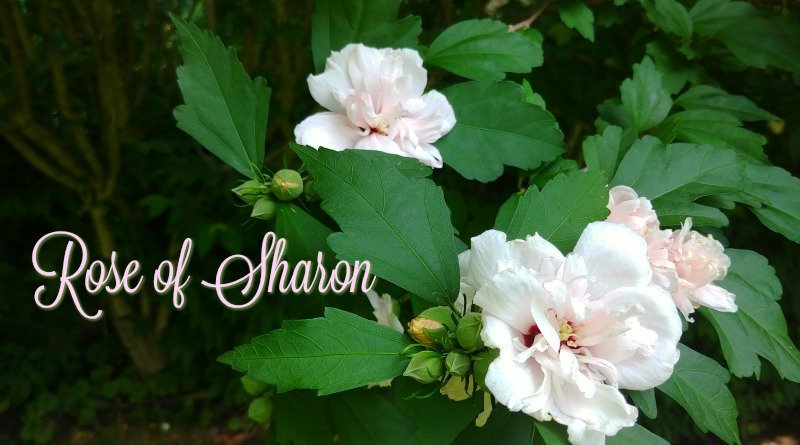Rose of Sharon Tree Care – I Had A Living Fence!
Moving into a new house, not newly built, but new to us, I am having to learn all kinds of things about new trees, bushes, flowers….basically everything growing here. And it seems that I have found that there are many new plants here that I did not have in my garden at my previous home. Living there for 18 years, we had put in some new trees and bushes, but it seems that there are so many new ones here that I never had.

One of the new plants, call it a tree or a bush, is the Rose of Sharon, and I am trying to learn all that I can about Rose of Sharon Tree Care. This “Rose of Sharon Fence” we have maybe makes ours really trees as opposed to bushes, but they burst into bloom here in Ohio in late July and August and into fall. Rose of Sharon is just full of bees and hummingbirds! I am really loving it. (The long toothed-edge leaves showing in the image above also show another bush growing in that ROS fence. I need to remove those since that isn’t what I want growing there.)

Rose of Sharon goes by many names including Althea and Hibiscus syriacus, but it isn’t a rose at all. It is a member of the Mallow family of plants, such as hollyhock, swamp mallow, Hibiscus and cotton…yep, cotton. Reference: https://www.botanical-online.com/familiamalvaceasangles.htm
Rose of Sharon Info
Zone 5-8
Blooms late summer thru fall
Full sun to part shade
Tolerates most soil conditions – doesn’t like dry!
Grows 1-2 ft each year. Reaches 8-12 ft, 4-10 ft spread. Can be BIG bush/tree.
Blooms on new growth, so trim in fall or spring to desired shape.
Rejuvenation pruning may be needed. (This is what I will need.)
You may recall that I did some rejuvenation pruning on a lilac bush at my old home. That bush came back just fine and now that lilac is a smaller 5ft tall and 4 ft wide bush with many blooms. ( I saw it through the fence when visiting my old neighbors.)
Seeds or Seedlings – Could They be Invasive?
Unless your particular variety is a sterile one, your Rose of Sharon will produce a lot of seeds which can become invasive in your area. Be sure that your seeds or seedlings don’t escape into nearby meadows, prairies, ponds, etc. Any plant which grows as fast and seed-forms as easily as the Rose of Sharon could invade these areas and create problems for the other plants that grow there.

After blooming, you could deadhead your plant or plants if you think this could cause a problem in your area. In my case, I know there will be a lot of seeds forming and dropping and I will probably be pulling and pulling all next spring.
But that wonderful “Living Fence” is worth it to me. So many bees, wasps, hummingbirds and other pollinators are attracted here and can be nourished. I will just need to take care of the downside of all those lovely flowers.
Thanks for reading!



I have a rather large Rose of Sharon and the flower itself doesn’t look anything like the picture you show. Yours has like double petals, mine is single. I love yours so much. Wish we could exchange.
Thanks so much. The doubles are really fluffy and pretty, but I like the singles too.